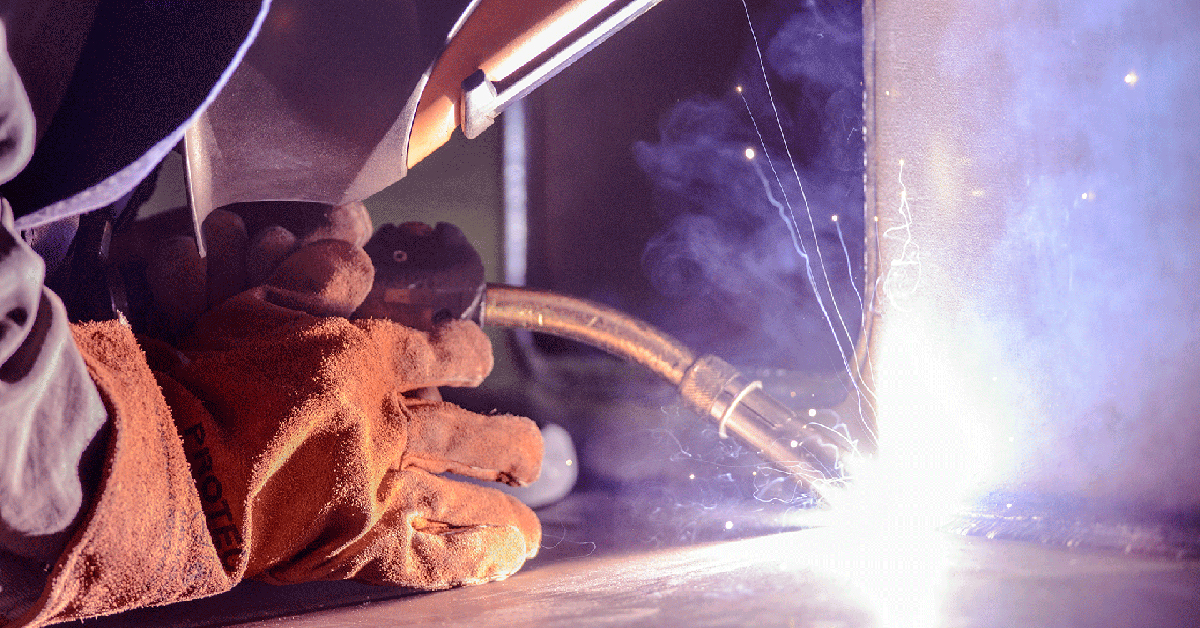Preventing Weld Undercut: Proven Techniques Every Welder Must Know
Preventing Weld Undercut: Proven Techniques Every Welder Must Know
Blog Article
Understanding the Causes and Solutions for Undercut Welding in Metal Fabrication Processes
In the realm of metal fabrication procedures, the event of undercut welding postures a significant challenge that demands a comprehensive understanding of its causes and viable solutions. The intricate interaction of numerous variables throughout welding operations can result in this unfavorable phenomenon, impacting the architectural honesty and general high quality of the welded joints - Preventing weld undercut. By dissecting the origin creates of undercut welding and checking out effective remedial actions, makers can raise the standard of their workmanship and make certain the manufacturing of perfect metal components
Common Reasons For Undercut Welding
Often neglected in metal manufacture, undercut welding happens due to numerous elements that require thorough interest and know-how to be successfully mitigated. One typical cause of undercut welding is too much warm input. When the warmth input is as well high, it can lead to the melting and succeeding erosion of the base product along the edges of the weld joint, developing a groove or undercut. Additionally, inappropriate welding techniques, such as making use of the wrong welding angle or take a trip speed, can likewise contribute to undercut development. Inadequate securing gas coverage is an additional key aspect that can result in undercutting. Inadequate gas coverage falls short to protect the weld swimming pool properly, bring about oxidation and undercut problems. Additionally, the choice of welding specifications, such as voltage, existing, and wire feed speed, plays a substantial duty in the occurrence of undercut welding. Comprehending these usual causes is essential for carrying out preventive steps and making sure top quality welds in metal construction procedures.
Influence of Incorrect Welding Parameters
Incorrect welding specifications can significantly compromise the stability and top quality of bonded joints in metal fabrication processes. The effect of inaccurate welding criteria manifests in various methods, leading to architectural weak points and issues in the bonded components. Precise interest to welding parameters is critical to make sure the manufacturing of high-grade welds with the wanted mechanical residential or commercial properties and structural stability.
Impact of Improper Torch Angle
Inappropriate lantern angle in welding procedures can considerably impact the quality and honesty of the last weld joints in metal manufacture procedures. Undercutting is a common welding issue where a groove develops along the weld toe, compromising the joint and compromising its architectural stability.
A lantern angle that is too high can lead to inadequate penetration, incomplete combination, and boosted spatter. On the other hand, a lantern angle that is too shallow can lead to too much penetration, burn-through, and distortion of the base product. Preventing weld undercut. Appropriate lantern angle is vital for ensuring constant weld top quality, stamina, and look
To avoid damaging and other problems brought on by inappropriate torch angles, welders must be educated to maintain the proper torch angle throughout the welding procedure. Routine monitoring and modification of torch angles throughout welding can help attain sound welds with marginal problems.
Duty of Inadequate Welding Methods

An additional facet of poor welding strategies is incorrect weld preparation. Insufficient cleaning of the base metals, inaccurate joint style, or inadequate edge preparation can all add to damage welding. Inadequate securing gas protection or utilizing the wrong kind of gas can result in insufficient fusion and the development of undercut flaws.
To attend to the role of inadequate welding strategies in metal manufacture procedures, it is important to give comprehensive training for welders. Appropriate education on welding specifications, joint preparation, and shielding gas choice can assist prevent undercut welding and guarantee top quality welds in metal fabrication tasks.
Efficient Solutions for Undercut Welding
Dealing with undercut welding in steel fabrication calls for executing reliable services to boost weld high quality and architectural stability. Among the primary remedies to fight undercut is to readjust welding parameters such as voltage, existing, and travel speed to make certain appropriate warmth input and combination. By fine-tuning these setups, welders can prevent extreme melting of the base steel and filler material, minimizing the likelihood of undercut formation.
In addition, proper joint preparation is critical in avoiding undercut. Making certain clean base metal surface areas free of pollutants and utilizing the ideal bevel angle can help promote far better weld infiltration and reduce the danger of undercut - Preventing weld undercut. Utilizing ideal welding strategies, such as weaving or oscillating the torch, can additionally help in distributing warmth evenly and filling up the weld joint adequately, reducing the opportunity of undercut flaws
Furthermore, picking the proper welding consumables, including electrodes and filler metals, is important in alleviating undercut. Utilizing products with ideal chemical make-ups and mechanical residential properties can add to accomplishing sound welds useful source with very site link little undercut. Routine evaluation and quality assurance actions ought to additionally be applied to spot and deal with undercut issues quickly, guaranteeing the general honesty of fabricated metal parts.

Verdict
Finally, understanding the causes and options for undercut welding in metal fabrication procedures is crucial for attaining top notch welds. By dealing with common causes such as incorrect welding criteria, incorrect torch angle, and inadequate welding strategies, welders can stop damaging and make certain solid, resilient welds. It is important to take note of these variables and carry out effective remedies to enhance the overall welding procedure and final product top quality.

Report this page